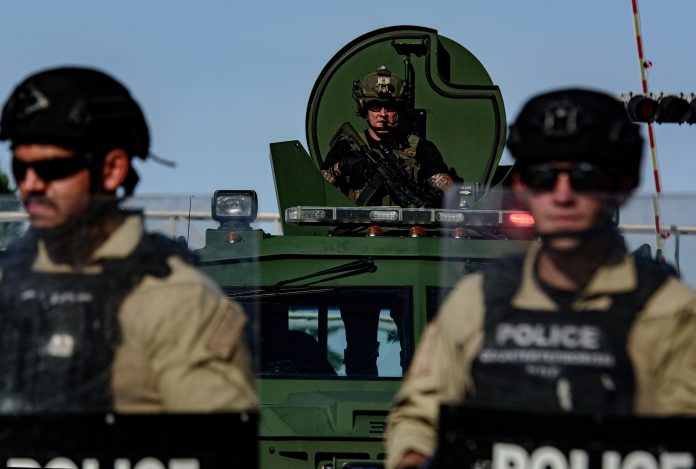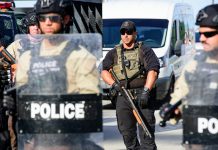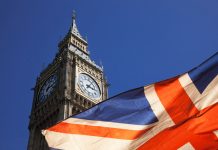In the summer of Black Lives Matter protests, police militarisation was everywhere, with tanks rolling in the streets, officers dressed in full combat gear and armed with automatic weaponry – did this presence decrease crime rates?
On 2 June, President Donald Trump ordered a show of force in Washington. This included low-flying helicopters, chemical spray and rubber bullets, which were deployed on peaceful protestors to move them away from a church. Clearing space around the church was the target of this military action, which enabled the President to take a photo with the building as part of his re-election push. He described the State as a “battleground”.
General Martin E Dempsey, a former chairman of the Joint Chiefs of Staff, wrote on Twitter: “America is not a battleground. Our fellow citizens are not the enemy.”
The Posse Comitatus Act has banned the use of the military within the US since the 19th Century. Despite this historic policy, Congress made some exceptions. This includes the National Guard, who wear military uniforms but are actually under the authority of the governor in the State. This is the force that President Trump wanted to deploy in the thousands, at the height of Black Lives Matter protests sparked by the police murders of George Floyd and Breonna Taylor.
Since 1997, the US Department of Defense has transferred more than $7.2billion in military equipment to local police. This is done through 1033 programme, which gives excess equipment from the military to police – for an almost irresistibly low price.
In 2017, LSU Department of Political Science Assistant Professor Anna Gunderson, and co-authors at Emory University, began investigating new data on SME provisions through the 1033 programme.
In 2014 following the police brutality protests in Ferguson, President Obama prohibited local law enforcement agencies from buying some of the most hard-hitting weaponry, such as tracked armoured vehicles and grenade launchers. In 2017, President Trump reversed this order, saying that there was solid research proving that police militarisation reduces crime. How does this impact the relationship between law enforcement agencies and the public?
‘Let’s stop using the excuse of a few bad apples’
According to a study published in the American Sociological Association’s Contexts magazine, almost one of five officers exhibit high levels of implicit, or unconscious, pro-white/anti-Black bias, and roughly one of eight officers exhibit high levels of explicit, or conscious, pro-white bias. This was taken from a survey of 8,000 active police officers across the United States.
Lead author and sociologist Jomills H. Braddock II, said: “But there seems to be such a reluctance to acknowledge the possibility that bias exists beyond a handful of individuals in policing. Not recognizing this represents an obstacle to doing something about it. So, let’s stop using the excuse of a few bad apples.”
Essentially, one in five officers are racist on some level, while one in eight officers are openly racist. The bad apples analogy is beginning to look more like a poisoned orchard.
Data shows excessive weaponry does not reduce crime
The Emory University researchers found that the militarisation of local law enforcement through weapons, armoured vehicles, combat attire, office equipment and other items provided by the Department of Defense does not reduce crime.
Professor Anna Gunderson commented: “When we looked at the data and ran the replications, nothing looked like the results being cited by the Trump Administration. We spent a year trying to diagnose the problem.”
“Scholars rely on accurate data to track and analyze the true effect of police militarization on crime. Policymakers also need accurate data to base their decisions upon. However to-date, we do not have reliable data on SME transfers to local police and sheriffs through the federal government.”
Researchers had also found incomplete records and discrepancies in the federal government’s tracking of surplus military equipment (SME) – ringing alarm bells about the way that these serious weapons are distributed.
‘This is a cautionary tale about the importance of oversight’
According to their data analysis, it turns out that the SME data released by the Department of Defense is unreliable. The Department is unable to accurately track where the heavy weaponry is going, so how can they also be analysing the efficiency of those weapons to fight crime?
“This is a cautionary tale about the importance of oversight. The most important thing for policy makers and the public to know is that you can’t justify giving surplus military equipment to police departments on the grounds it will lead to a reduction in crime. There is no evidence for that. You can’t claim this program is important because it reduces crime,” commented co-author Tom Clark, Charles Howard Candler Professor of Political Science at Emory.
“If you are going to engage in policy making experiments, it is important to include resources and requirements for reporting so that policy analysts can study whether the policy is working.”
According to this research, there is no evidence that SME transfers reduce the crime rate of a city, but there is plenty showing the damage that heavily-armed law enforcement agencies can do to communities. Maybe it’s time to abandon the apples, and figure out how the orchard works.
Editor's Recommended Articles
-
Must Read >> How is contemporary Black activism reshaping itself?






























